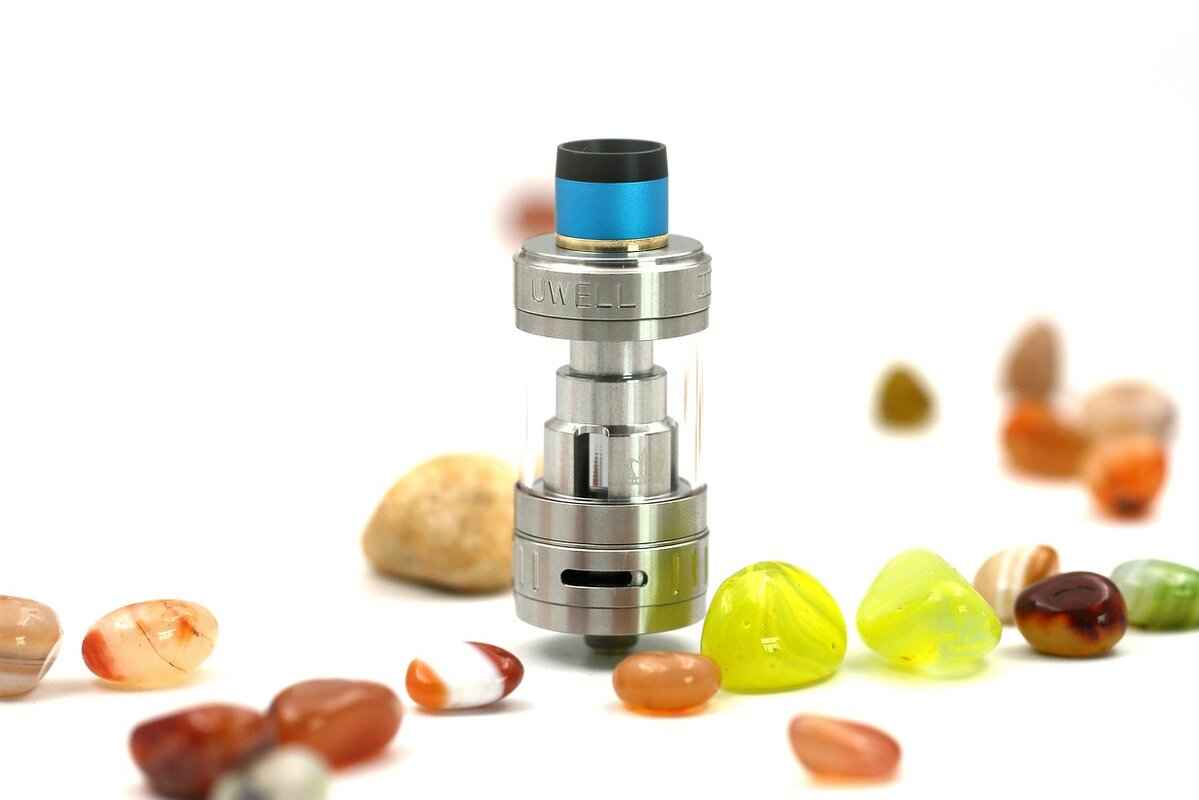This article explores the relationship between vaping and sensory perception, particularly taste and smell, examining potential benefits and drawbacks based on scientific research and expert opinions.
Vaping refers to the act of inhaling vapor produced by electronic cigarettes or vape pens. These devices heat a liquid, often containing nicotine, flavorings, and other chemicals, to create an aerosol. Understanding the technology behind vaping is essential, as it influences how users experience flavors and aromas.
Research indicates that vaping can influence taste perception. Some users report enhanced flavors, while others experience diminished taste sensitivity. This section delves into the science behind these experiences.
Nicotine, a primary component in many vape liquids, may alter taste perception. Studies suggest that nicotine interacts with taste receptors, potentially enhancing or dulling flavor enjoyment. Understanding this interaction is crucial for users seeking to improve their sensory experiences.
In the short term, vaping can enhance taste for some users due to increased stimulation of taste buds. Many individuals report that flavors become more pronounced immediately after vaping, providing a unique sensory experience. This immediate effect can be particularly noticeable when consuming flavored e-liquids.
Conversely, prolonged vaping may lead to decreased taste sensitivity. Research indicates that consistent exposure to certain chemicals in vape products can desensitize taste buds over time. This section examines studies analyzing the long-term impact of vaping on taste perception, emphasizing the potential risks of habitual use.
This section compares the effects of vaping on taste and smell with those of traditional smoking. While both activities involve inhalation, the chemical composition of vape products differs significantly from combustible tobacco. Users may find that vaping results in different sensory outcomes due to reduced exposure to harmful tar and other byproducts associated with traditional smoking.
Many individuals who have lost their sense of smell seek ways to restore it. This segment discusses whether vaping can play a role in regaining olfactory function.
Olfactory receptors are key to our sense of smell. Research is ongoing to determine how vaping may influence these receptors. Some anecdotal evidence suggests that certain flavors may stimulate olfactory pathways, potentially aiding in smell recovery.
User testimonials often provide insight into the perceived benefits of vaping for smell restoration. While personal accounts vary, they contribute to the conversation about vaping’s impact on sensory perception. However, it is essential to balance these testimonials with scientific findings to form a comprehensive understanding.
While some may experience improved taste and smell through vaping, there are potential health risks. This section outlines the adverse effects and concerns associated with vaping.
Vaping poses various health risks that can overshadow potential sensory benefits. Concerns include respiratory issues, cardiovascular effects, and the potential for addiction to nicotine. Understanding these risks is crucial for users looking to enhance their sensory experiences.
Those seeking to enhance their sense of taste and smell may consider alternatives to vaping. Options include dietary adjustments, hydration, and engaging in activities that stimulate the senses. These methods can provide a healthier approach to improving sensory perception without the risks associated with vaping.

What Is Vaping and How Does It Work?
Vaping has gained significant popularity over recent years, serving as an alternative to traditional smoking. To fully understand vaping, it is essential to delve into the technology behind e-cigarettes and vape pens. This exploration includes how these devices produce aerosol and the various substances involved in the vaping process.
At its core, vaping involves the use of e-cigarettes or vape pens that heat a liquid, commonly referred to as e-liquid or vape juice. This liquid typically contains a mixture of propylene glycol, vegetable glycerin, flavorings, and often nicotine. When heated, the liquid transforms into an aerosol, which users inhale.
The heating element, usually a coil, is powered by a battery. As the coil heats up, it vaporizes the liquid, creating an aerosol that users can inhale. This process is often referred to as vaporization, and it is crucial to note that it differs from combustion, which occurs in traditional cigarettes. Combustion produces harmful tar and other toxic substances, while vaping aims to minimize these risks.
The composition of e-liquid is vital to understanding the vaping experience. Most e-liquids consist of:
- Propylene Glycol (PG): A colorless liquid that is commonly used as a base in e-liquids. It is known for its ability to produce a throat hit similar to traditional smoking.
- Vegetable Glycerin (VG): A thicker base that produces larger vapor clouds. VG is often preferred by users who enjoy cloud chasing.
- Flavorings: These can range from fruity to dessert-like flavors, enhancing the overall vaping experience.
- Nicotine: Available in various concentrations, nicotine is the addictive substance found in tobacco products.
The temperature at which the e-liquid is heated plays a significant role in the quality of the vapor produced. Lower temperatures tend to produce a smoother vapor, while higher temperatures can enhance flavor but may also create harmful byproducts. Understanding the optimal temperature settings is essential for a better vaping experience.
While vaping is often marketed as a safer alternative to smoking, it is not without risks. The long-term effects of inhaling aerosolized substances are still being studied. Users should be aware of potential health risks, including respiratory issues and the effects of nicotine addiction.
In summary, understanding vaping requires a closer look at the technology behind e-cigarettes and vape pens, the substances involved, and the mechanisms of aerosol production. As the vaping industry continues to evolve, ongoing research will be crucial in determining its safety and efficacy compared to traditional smoking.

Does Vaping Affect Taste Buds?
Vaping has become a popular alternative to traditional smoking, leading many to question its effects on sensory perception, particularly taste. Research indicates that vaping can significantly influence taste perception, with varying experiences reported by users. Some individuals claim to experience enhanced flavors, while others report a decrease in taste sensitivity. This section explores the scientific basis behind these contrasting experiences.
The Science Behind Taste Perception
Taste perception is a complex process involving taste buds, which are sensitive to different flavor profiles. These taste buds communicate with the brain, allowing us to experience flavors in food and beverages. Vaping introduces various substances into the body, including nicotine and flavoring agents, which can interact with taste receptors in unique ways.
Nicotine’s Influence on Taste Sensitivity
Nicotine, a primary component of many vape liquids, may play a significant role in altering taste perception. Studies suggest that nicotine can stimulate specific taste receptors, potentially enhancing flavor enjoyment for some users. However, this stimulation may also lead to a temporary desensitization of taste buds, resulting in diminished sensitivity over time. Understanding this dual effect is crucial for users seeking to maximize their flavor experience while vaping.
Short-Term Effects of Vaping on Taste
In the short term, many users report an immediate enhancement in taste perception after vaping. This phenomenon can be attributed to increased stimulation of taste buds and heightened sensory awareness. For instance, flavors in food may become more pronounced, leading to a more enjoyable eating experience. However, this boost in taste sensitivity may not be sustainable, as prolonged exposure to vaping can lead to adverse effects.
Long-Term Implications of Vaping on Taste Buds
Conversely, long-term vaping may result in a decrease in taste sensitivity. Research indicates that continued exposure to vaping can lead to a reduction in the number of functioning taste buds or their responsiveness. This decline in sensitivity can diminish the overall enjoyment of flavors, leading to a less satisfying experience when consuming food and beverages. It is essential for users to be aware of these potential long-term effects on their taste perception.
Comparing Vaping to Traditional Smoking
When comparing the effects of vaping on taste and smell with traditional smoking, significant differences emerge. Traditional tobacco smoking exposes users to a wide range of harmful chemicals that can severely impair taste and smell. In contrast, vaping may offer a less harmful alternative, but it is not without its risks. Understanding these differences can help users make informed decisions about their choices regarding nicotine consumption.
Conclusion
In summary, vaping can indeed affect taste perception in various ways. While some users may experience enhanced flavors, others may suffer from diminished sensitivity over time. The involvement of nicotine and the chemicals present in vape liquids play a critical role in these experiences. As research continues to evolve, it is vital for users to remain informed about the potential impacts of vaping on their taste buds.
Nicotine’s Role in Taste Perception
Nicotine, a well-known stimulant found in tobacco products, plays a significant role in the vaping experience, particularly regarding taste perception. Understanding how nicotine interacts with our taste receptors can shed light on its potential effects on flavor enjoyment. This section delves into the complex relationship between nicotine and our taste buds, exploring its implications for both casual vapers and those considering the switch from traditional smoking.
Research indicates that nicotine can alter taste perception in various ways. Some studies suggest that nicotine may enhance the sensitivity of taste receptors, leading to an intensified flavor experience for certain users. This phenomenon occurs because nicotine stimulates the release of neurotransmitters, which can enhance taste signaling pathways. As a result, some vapers report that their favorite flavors seem more pronounced and enjoyable.
Conversely, the effects of nicotine on taste perception are not universally positive. While some users may experience heightened flavor enjoyment, others report a decrease in their ability to taste certain flavors. This inconsistency can be attributed to individual differences in taste receptor sensitivity and personal preferences for specific flavor profiles. Furthermore, prolonged exposure to nicotine may lead to a phenomenon known as taste fatigue, where users become desensitized to specific flavors over time. This desensitization can diminish the overall vaping experience, making previously enjoyable flavors seem bland or unappealing.
Additionally, the method of nicotine delivery in vaping can influence taste perception. For instance, the concentration of nicotine in vape liquids varies widely, and higher concentrations may lead to a more pronounced impact on taste. Some users may opt for lower nicotine concentrations to avoid overwhelming their taste buds, particularly if they are sensitive to nicotine’s effects.
It’s important to note that the interaction between nicotine and taste perception is not solely a matter of enhancement or degradation. The context in which vaping occurs also plays a crucial role. Factors such as the environment, mood, and even the food consumed alongside vaping can significantly influence how flavors are perceived. For example, many users find that certain flavors are more enjoyable when paired with specific foods or beverages, creating a multisensory experience that can enhance overall satisfaction.
In summary, nicotine’s role in taste perception is multifaceted. While it can enhance flavor enjoyment for some users, it may also lead to decreased sensitivity and taste fatigue for others. Understanding these dynamics is essential for vapers seeking to maximize their flavor experience. As research continues to explore the intricate relationship between nicotine and taste, users can make informed choices about their vaping habits and flavor preferences.
Short-Term Effects on Taste
Vaping has become a popular alternative to traditional smoking, with many users reporting various sensory experiences. One area of interest is the . In this section, we will explore how vaping can temporarily enhance flavor perception and the underlying mechanisms involved.
When vaping, the inhalation of flavored vapor can lead to an immediate increase in taste bud stimulation. This phenomenon occurs due to the combination of flavor compounds present in e-liquids and the act of inhalation itself. As users puff on their devices, the aerosolized particles come into contact with taste receptors, potentially leading to a more intense flavor experience.
- Increased Sensitivity: Many users report that flavors seem more pronounced right after vaping. This heightened sensitivity can make even subtle flavors stand out, creating a more enjoyable tasting experience.
- Flavor Variety: Vaping offers a wide range of flavors, from fruity to dessert-like, which can enhance the overall sensory experience. Users may find themselves more inclined to experiment with different flavors, further enriching their taste experiences.
- Enhanced Enjoyment: The combination of nicotine and flavorful vapor can lead to a pleasurable sensory experience, making food and drink more enjoyable immediately after vaping.
Nicotine, a common ingredient in many vape liquids, may also contribute to the enhancement of taste perception. Research suggests that nicotine can interact with taste receptors, potentially altering how flavors are perceived. This interaction might lead to a temporary increase in flavor enjoyment, particularly for users who are accustomed to nicotine consumption.
While the immediate effects of vaping on taste can be positive, there are potential downsides to consider. Some users may experience a temporary distortion in taste after prolonged vaping sessions. The initial enhancement of flavor can be followed by a period of diminished taste sensitivity, as the taste buds may become overstimulated or fatigued.
It’s important to note that not all users will experience the same effects. Factors such as individual biology, the specific e-liquid used, and frequency of vaping can all influence how taste is perceived. Some may find that their taste buds become more sensitive, while others may notice a reduction in flavor intensity over time.
In summary, the short-term effects of vaping on taste can lead to enhanced flavor perception for many users. The combination of increased taste bud stimulation and the variety of available flavors creates an engaging sensory experience. However, individual responses can vary, and potential downsides should be considered. Understanding these dynamics can help users make informed decisions about their vaping habits and their impact on taste perception.
Long-Term Effects on Taste
As the popularity of vaping continues to rise, many users are left wondering about its long-term effects on their sensory perceptions, particularly taste. While some individuals report enhanced flavors shortly after vaping, research indicates that prolonged use may lead to a decrease in taste sensitivity. This section delves into the scientific findings that explore the intricate relationship between vaping and taste bud health.
Studies have shown that the chemicals found in e-cigarettes, including nicotine and various flavoring agents, can have a profound impact on taste perception. For instance, a research study published in the Journal of Oral Rehabilitation highlighted that long-term exposure to vaping can lead to alterations in taste bud function, resulting in diminished sensitivity to flavors. This phenomenon raises concerns about the potential for users to develop a preference for stronger flavors, which could further desensitize their taste buds over time.
What Causes Decreased Taste Sensitivity?
One of the primary reasons for decreased taste sensitivity among long-term vapers is the impact of nicotine. Nicotine interacts with taste receptors in the mouth, which can initially enhance flavor perception. However, chronic exposure may lead to receptor desensitization, meaning that over time, users might find it increasingly difficult to detect subtle flavors. Moreover, the inhalation of vaporized substances can lead to inflammation in the oral cavity, further affecting taste perception.
Comparative Studies: Vaping vs. Smoking
When comparing the long-term effects of vaping to traditional smoking, some studies suggest that vaping may be less damaging to taste perception. Traditional cigarettes contain a multitude of harmful substances that can lead to severe oral health issues, including a greater risk of taste loss. However, while vaping may pose fewer risks, it is essential to recognize that it is not without its own set of challenges. Research indicates that even vaping can contribute to long-term taste alterations, albeit potentially at a slower rate than traditional smoking.
Personal Accounts and Research Findings
- Many vapers report an initial enhancement of taste, but anecdotal evidence suggests that prolonged use often leads to a dulling of flavors.
- Research published in the International Journal of Environmental Research and Public Health indicates that users who vape daily are at a higher risk of experiencing taste sensitivity loss.
- Experts recommend periodic breaks from vaping to help restore taste bud function and sensitivity.
Addressing the Issue: Can Sensitivity Be Restored?
For those who have experienced a decline in taste sensitivity due to prolonged vaping, the good news is that there may be ways to help restore taste function. Some strategies include:
- Taking breaks from vaping to allow the taste buds to recover.
- Staying hydrated to promote oral health.
- Incorporating a balanced diet rich in fruits and vegetables, which can naturally stimulate taste bud function.
In conclusion, while vaping may offer some short-term enhancements to taste perception, the long-term effects appear to lean towards a decrease in taste sensitivity. Users should be aware of these potential changes and consider taking proactive steps to mitigate the impact on their sensory experiences. As research continues to evolve, it is crucial to stay informed about the implications of vaping on taste and overall oral health.
Comparing Vaping to Traditional Smoking
This section delves into the intricate relationship between vaping and traditional smoking, specifically focusing on how each affects our sense of taste and smell. While both practices involve inhaling substances, the chemical composition and sensory outcomes differ significantly.
Traditional smoking primarily involves the combustion of tobacco, which releases a myriad of harmful chemicals. These include tar, carbon monoxide, and various carcinogens that can severely impair both taste and smell. Studies have shown that long-term smokers often experience a diminished ability to detect flavors and scents due to the damage caused to sensory receptors in the nasal cavity and mouth.
In contrast, vaping utilizes e-liquids that typically contain fewer harmful substances. When heated, these liquids produce an aerosol that is often perceived as less irritating than smoke from traditional cigarettes. However, the presence of nicotine, flavorings, and other additives in vape products can still impact taste and smell. Some users report an enhanced flavor experience while vaping, attributing it to the absence of combustion byproducts that mask taste.
| Aspect | Traditional Smoking | Vaping |
|---|---|---|
| Chemical Exposure | High levels of tar, carbon monoxide, and carcinogens | Lower levels of harmful chemicals; primarily nicotine and flavorings |
| Impact on Taste | Diminished taste sensitivity over time | Varied; some users report enhanced taste, others diminished sensitivity |
| Impact on Smell | Significant impairment due to receptor damage | Potential for improvement, but varies by individual |
Research indicates that while vaping may present a less harmful alternative to smoking, it is not entirely without risks. For instance, the flavoring agents used in e-liquids can also contribute to adverse reactions. Some studies suggest that certain flavorings may lead to inflammation in the respiratory system, which could indirectly affect sensory perception.
Moreover, the psychological aspect of smoking versus vaping cannot be overlooked. The ritualistic nature of smoking may create a stronger association with taste and smell for traditional smokers. In contrast, the experience of vaping is often perceived as more clinical and less tied to sensory enjoyment, which could influence how users perceive flavors.
In summary, while vaping may offer some advantages over traditional smoking in terms of chemical exposure and sensory outcomes, the effects on taste and smell can be highly individualized. Factors such as the choice of e-liquid, frequency of use, and personal biology all play a crucial role in determining how each individual experiences these senses.
As we continue to explore the effects of vaping compared to traditional smoking, it is essential to remain informed and consider both the potential benefits and risks associated with each practice.

Can Vaping Help Restore Sense of Smell?
Many individuals who have lost their sense of smell are actively seeking ways to restore this vital sensory function. One emerging area of interest is the potential role of vaping in regaining olfactory capabilities. This article delves into the question: Can vaping help restore your sense of smell?
The olfactory system is crucial for detecting and identifying odors. It consists of olfactory receptors located in the nasal cavity, which send signals to the brain when they detect airborne molecules. When this system is compromised, individuals may experience a diminished or complete loss of smell, known as anosmia. Various factors, including viral infections, allergies, and environmental toxins, can lead to this condition.
Research indicates that vaping may have an impact on olfactory receptors. The aerosols produced by e-cigarettes contain various chemicals that could potentially stimulate or irritate these receptors. Some users report a temporary enhancement in their sense of smell after vaping, while others experience the opposite effect. It’s essential to consider the composition of vape liquids and how they interact with the olfactory system.
- Increased Sensory Stimulation: Some anecdotal evidence suggests that the flavors and aromas from vaping can stimulate olfactory receptors, potentially aiding in smell recovery.
- Personal Accounts: Many users share stories of improved smell perception after switching to vaping, claiming that certain flavors enhance their olfactory experiences.
While personal testimonials provide insight, scientific studies on the relationship between vaping and olfactory restoration are limited. Experts emphasize the need for more rigorous research to establish a definitive link. The effects of nicotine and other chemicals in vape liquids on olfactory receptors remain largely unexplored.
Despite some potential benefits, there are significant risks associated with vaping. The inhalation of chemical substances may lead to irritation or damage to the olfactory epithelium, potentially worsening smell loss. Additionally, the long-term effects of vaping on overall health are still being studied, raising concerns about its safety as a method for restoring sensory function.
If you are looking to restore your sense of smell, consider alternatives to vaping. Here are some options:
- Olfactory Training: This technique involves repeated exposure to specific scents to help retrain the brain’s response to smells.
- Healthy Lifestyle Choices: Maintaining a balanced diet, staying hydrated, and avoiding irritants can support overall sensory health.
- Consulting Healthcare Professionals: Seeking advice from ENT specialists or neurologists can provide tailored strategies for smell restoration.
While vaping may offer some individuals a temporary boost in their sense of smell, it is crucial to weigh the potential risks against the benefits. The relationship between vaping and olfactory recovery is complex and requires further investigation. For those experiencing smell loss, exploring safer and more established methods for recovery may be the best course of action.
Impact of Vaping on Olfactory Receptors
Vaping has gained popularity as an alternative to traditional smoking, but its effects on our sensory perception, particularly the sense of smell, remain a topic of considerable debate. One of the critical components of our olfactory system is the olfactory receptors, which play a vital role in how we perceive scents. This section explores how vaping may influence these receptors and the potential implications for sensory recovery.
Olfactory receptors are specialized proteins located in the nasal cavity that detect odor molecules. When we inhale, these receptors bind to odorants, sending signals to the brain that are interpreted as specific smells. The health and functionality of these receptors are crucial for maintaining our sense of smell.
Research indicates that vaping could have both positive and negative effects on olfactory receptors. Some studies suggest that the chemicals in e-liquids might create a temporary enhancement in smell for certain users. However, the long-term exposure to vaping aerosols could potentially lead to a decline in olfactory sensitivity.
- Propylene Glycol – Commonly used as a base in e-liquids, it may have an impact on mucous membranes.
- Vegetable Glycerin – Another base that can affect the throat and nasal passages.
- Flavoring Agents – These can be complex compounds that might irritate olfactory receptors.
In the short term, some users report an enhanced sense of smell after vaping, possibly due to the stimulation of olfactory receptors. However, long-term vaping may lead to a decrease in olfactory sensitivity. This is concerning as prolonged exposure to the various chemicals in vape products could desensitize these receptors, making it harder for individuals to detect odors.
For individuals recovering from conditions that affect their sense of smell, such as COVID-19 or sinus infections, some anecdotal evidence suggests that vaping may help. Users have reported that certain flavors can evoke memories or enhance their olfactory experiences. However, scientific research on this topic is still emerging, and more studies are needed to draw definitive conclusions.
Anecdotal reports from users often indicate a perceived improvement in their sense of smell after starting to vape. These personal accounts provide insight into how vaping may influence olfactory function, but they should be interpreted cautiously, as individual experiences can vary widely.
While some individuals may experience temporary benefits in their sense of smell from vaping, it is essential to consider the potential risks. The chemicals present in vaping products can lead to irritation of the nasal passages and may even contribute to long-term health issues, including respiratory problems.
For those looking to enhance their sense of smell, various alternatives exist that do not involve vaping. These include:
- Essential Oils: Inhaling essential oils can stimulate olfactory receptors without the harmful effects of vaping.
- Nasal Training: Engaging in exercises that focus on identifying different scents can help improve olfactory function.
- Healthy Diet: Consuming foods rich in vitamins A and C may support overall sensory health.
In summary, the impact of vaping on olfactory receptors is complex and multifaceted. While some users may experience short-term enhancements in their sense of smell, the long-term implications could be detrimental. As research continues to evolve, it is crucial for individuals to weigh the potential benefits against the risks associated with vaping.
Personal Experiences and Anecdotal Evidence
The exploration of vaping as a potential aid for restoring the sense of smell has garnered significant attention, particularly through the lens of personal experiences and anecdotal evidence. When individuals share their stories about the impact of vaping on their olfactory senses, it often provides a unique perspective that complements scientific research.
Many users who have experienced a loss of smell, whether due to conditions like COVID-19 or other factors, report varying degrees of success with vaping. Some individuals claim that certain flavors in vape juices can stimulate their olfactory receptors, leading to a gradual restoration of their sense of smell. For instance, a user might describe how the scent of mint or citrus flavors helped them reconnect with their sense of smell after a prolonged period of loss.
- Flavor Stimulation: Many users note that the act of vaping, particularly with flavorful e-liquids, seems to activate their sense of smell, even if only temporarily.
- Psychological Effects: Some testimonials suggest that the act of vaping itself may have psychological benefits, providing a sense of normalcy and enjoyment that can positively influence sensory perception.
- Variability in Experience: It is essential to highlight that experiences vary widely among individuals. While some report improvements, others may not notice any change, indicating that vaping’s effects may not be universal.
Anecdotal evidence can sometimes provide insights that align with scientific research. Studies have shown that the inhalation of certain substances can stimulate olfactory receptors, which could explain why some users find relief through vaping. However, it is crucial to approach these personal accounts with caution, as they do not substitute for rigorous scientific validation.
While user testimonials can be compelling, it is essential to consider the potential risks associated with vaping. Health experts warn that while some individuals may experience temporary improvements in their sense of smell, the long-term effects of vaping on overall health are still under investigation. Users should remain aware of the possible adverse effects on respiratory health and the addictive nature of nicotine.
Many individuals seeking to restore their sense of smell through vaping often turn to online communities for support and shared experiences. These platforms can provide a sense of belonging and a space to exchange tips and personal stories. However, it is vital for users to critically evaluate the information shared in these forums and consult healthcare professionals for advice tailored to their specific situations.
In conclusion, while personal experiences and testimonials regarding vaping and smell restoration can provide valuable insights, they should be considered alongside scientific research and expert opinions. As the conversation around vaping continues to evolve, it is crucial to remain informed and cautious, balancing personal anecdotes with reliable information.

Are There Risks to Consider?
Vaping has gained popularity as an alternative to traditional smoking, often marketed as a safer option. However, while some users report enhanced sensory experiences, particularly in taste and smell, it is crucial to examine the potential health risks associated with this practice. This section outlines the adverse effects and concerns related to vaping, aiming to provide a comprehensive understanding of its implications.
Despite the perception that vaping is less harmful than smoking, research indicates that it is not without its own set of health risks. Users may experience a range of adverse effects, some of which can be serious:
- Respiratory Issues: Vaping can irritate the lungs and airways, leading to symptoms such as coughing, wheezing, and shortness of breath. Some studies suggest a link between vaping and conditions like vaping-associated lung injury.
- Cardiovascular Concerns: The inhalation of nicotine and other chemicals can increase heart rate and blood pressure, potentially leading to cardiovascular problems over time.
- Potential for Addiction: Many vape liquids contain nicotine, which is highly addictive. Users may find themselves dependent on vaping, making it difficult to quit.
- Unknown Long-Term Effects: As vaping is a relatively new phenomenon, the long-term health effects are still being studied. There is concern about the potential for chronic diseases similar to those caused by traditional smoking.
Vaping liquids contain a variety of chemicals, some of which can be harmful when inhaled. Common substances found in e-liquids include:
- Propylene Glycol and Vegetable Glycerin: While generally recognized as safe for ingestion, these substances can produce harmful byproducts when heated and inhaled.
- Flavoring Agents: Many flavoring chemicals used in e-liquids are safe for consumption but may pose risks when vaporized. Some have been linked to respiratory issues.
- Heavy Metals: Studies have found traces of heavy metals like lead and cadmium in aerosol produced by e-cigarettes, likely originating from the heating elements.
In addition to physical health risks, vaping may also impact mental health. Users may experience:
- Anxiety and Mood Changes: Nicotine can lead to mood swings and increased anxiety levels, particularly when withdrawal symptoms occur.
- Impact on Cognitive Function: Research suggests that nicotine may affect brain development in adolescents, potentially leading to cognitive impairments.
For those seeking to enhance their sense of taste and smell without the risks associated with vaping, several alternatives are available:
- Healthy Diet: Consuming a balanced diet rich in fruits, vegetables, and whole grains can naturally improve sensory perception.
- Hydration: Staying well-hydrated is essential for maintaining optimal taste and smell functions.
- Regular Exercise: Physical activity promotes overall health and can enhance sensory functions.
- Aromatherapy: Utilizing essential oils can stimulate olfactory receptors and potentially improve the sense of smell.
In summary, while some users may experience temporary improvements in taste and smell through vaping, the potential health risks cannot be overlooked. It is essential to weigh these risks against any perceived benefits and consider healthier alternatives for sensory enhancement.
Health Risks of Vaping
Vaping has gained popularity as an alternative to traditional smoking, but it is crucial to understand that it is not without its health risks. While some users may believe that vaping is a safer option, numerous studies indicate that e-cigarette use can lead to significant health concerns. In this section, we will explore the most pressing health risks associated with vaping, providing a comprehensive overview backed by scientific research.
The health risks of vaping are multifaceted, affecting various bodily systems. Here are some of the most significant concerns:
- Respiratory Issues: Vaping can lead to inflammation of the airways, resulting in chronic cough and shortness of breath. Some users have reported symptoms similar to those seen in traditional smokers, despite not having a history of smoking.
- Cardiovascular Risks: Nicotine, a common ingredient in vape liquids, can increase heart rate and blood pressure, potentially leading to an increased risk of heart disease over time.
- Exposure to Toxic Chemicals: Many e-cigarettes contain harmful substances, such as formaldehyde and acrolein, which can cause lung damage and other health problems.
- Potential for Addiction: The nicotine in e-cigarettes is highly addictive. Users may find themselves developing a dependency, which can lead to increased consumption and associated health risks.
Research has shown that vaping can have detrimental effects on lung health. Studies indicate that the aerosol produced by e-cigarettes contains fine particles that can penetrate deep into the lungs, causing inflammation and impairing lung function. Furthermore, the long-term effects of inhaling these substances are still not fully understood, raising concerns about the potential for chronic lung diseases.
Yes, there is a growing body of evidence linking vaping to severe health conditions. Some of the most alarming findings include:
- Vaping-Associated Lung Injury: In recent years, there have been reports of severe lung injuries associated with vaping, leading to hospitalization and, in some cases, death. This condition is often referred to as EVALI (e-cigarette or vaping product use-associated lung injury).
- Potential for Cancer: The long-term exposure to the chemicals found in vape liquids may increase the risk of developing certain cancers, similar to traditional cigarette smoking.
In addition to physical health risks, vaping can also have psychological effects. Users may experience increased anxiety or depression, particularly if they develop a dependency on nicotine. Furthermore, the act of vaping can become a compulsive behavior, leading to further mental health challenges.
Certain populations may be more vulnerable to the health risks associated with vaping. Adolescents and young adults, for example, are at a higher risk due to their developing brains and the potential for nicotine addiction. Pregnant women and individuals with pre-existing health conditions should also exercise caution, as the effects of vaping can exacerbate existing health issues.
In summary, while vaping may seem like a less harmful alternative to smoking, the health risks associated with e-cigarette use are significant and cannot be overlooked. Understanding these risks is essential for making informed decisions about vaping and its potential impact on health.
Alternatives to Vaping for Sensory Improvement
For individuals looking to enhance their sense of taste and smell, exploring alternatives to vaping can be a beneficial approach. While vaping has gained popularity, it is essential to consider other methods and lifestyle changes that may promote sensory improvement without the potential risks associated with e-cigarettes. Below are several effective strategies to enhance your sensory experiences.
One of the most impactful ways to improve your sensory perception is through dietary adjustments. Foods rich in vitamins and minerals, particularly those containing zinc and vitamin A, can significantly benefit your taste and smell. Consider incorporating the following:
- Citrus fruits – Oranges, lemons, and grapefruits are known to stimulate taste buds.
- Spices and herbs – Ingredients like ginger, garlic, and basil can enhance flavor perception.
- Fermented foods – Foods such as yogurt and kimchi may support gut health, which is linked to improved sensory functions.
Staying hydrated is crucial for maintaining optimal sensory functions. Dehydration can lead to a dry mouth, which diminishes taste perception. Aim to drink at least 8 glasses of water a day, and consider herbal teas or broths to enhance hydration levels.
Engaging in mindful eating can significantly enhance your sensory experiences. This involves focusing on the flavors and aromas of your food without distractions. Here are some tips:
- Take smaller bites to savor each flavor.
- Close your eyes while eating to focus on the sensory experience.
- Try to identify different flavors and textures in each bite.
To improve your olfactory senses, consider incorporating aromatherapy into your daily routine. Essential oils like peppermint, eucalyptus, and lavender can stimulate your sense of smell. You can:
- Use a diffuser to disperse essential oils throughout your home.
- Inhale directly from the bottle for an immediate boost.
- Incorporate scented candles or incense into your environment.
Engaging in regular physical activity has been shown to enhance overall health, including sensory perception. Exercise increases blood flow, which can improve the functioning of taste and smell receptors. Aim for at least 30 minutes of moderate exercise most days of the week.
Reducing exposure to irritants such as smoke, strong chemicals, and pollutants can help preserve your sensory functions. Consider the following steps:
- Limit exposure to secondhand smoke.
- Use natural cleaning products to reduce chemical exposure.
- Ensure good ventilation in your living space.
If you notice significant changes in your taste or smell, it may be beneficial to consult with a healthcare professional. They can provide guidance and recommend treatments or therapies tailored to your specific needs.
In conclusion, while vaping may offer temporary enhancements to taste and smell for some users, there are numerous alternatives that can promote sensory improvement without the associated health risks. By adopting a holistic approach that includes dietary changes, mindful practices, and lifestyle adjustments, you can enhance your sensory experiences naturally and effectively.
Frequently Asked Questions
- Can vaping actually improve my sense of taste?
Vaping can have mixed effects on taste perception. Some users report enhanced flavors, while others may experience a decrease in taste sensitivity. It really depends on individual experiences and the specific substances used in the vape.
- How does nicotine affect taste perception?
Nicotine can interact with taste receptors, potentially altering how we perceive flavors. While it might enhance taste for some, prolonged exposure could lead to diminished sensitivity, which is something to consider if you’re a frequent vaper.
- Are there any health risks associated with vaping?
Yes, vaping comes with various health risks, including potential respiratory issues and cardiovascular concerns. These risks can sometimes outweigh the sensory benefits, so it’s important to weigh your options carefully.
- Can vaping help restore a lost sense of smell?
Some anecdotal evidence suggests that vaping may aid in regaining olfactory function for certain individuals. However, scientific research on this topic is still limited, so it’s essential to approach this with caution.
- What alternatives to vaping can improve taste and smell?
If you’re looking for ways to enhance your sensory perception without vaping, consider lifestyle changes like a balanced diet, staying hydrated, and practicing nasal exercises. These methods can be beneficial without the risks associated with vaping.














